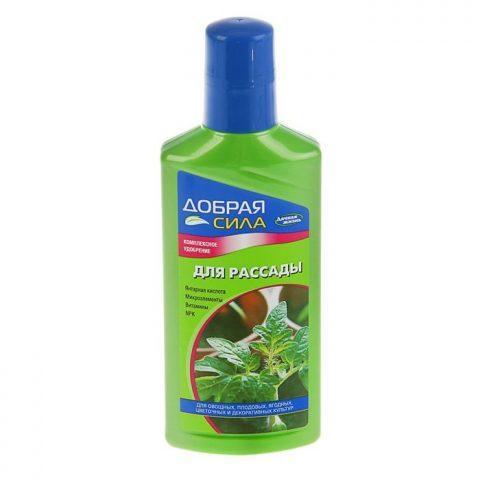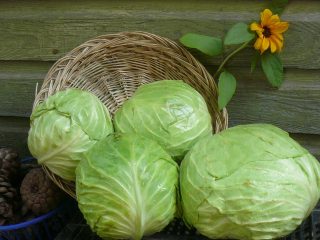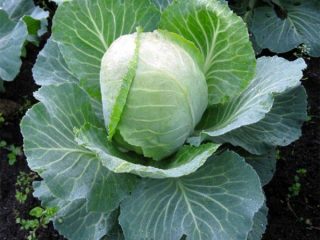Content
Cabbage is a crop that is consistently in “demand” among Russian gardeners. And, due to the climate, in most regions it is grown by seedlings. Contrary to popular belief, plants (even young ones) are quite cold-resistant, therefore, if you want to get stronger and initially hardened seedlings, you can sow cabbage for seedlings in a greenhouse.
Is it possible to grow cabbage in a greenhouse?
Cabbage is by no means a “tender” heat-loving plant. When sowing seedlings in an unheated polycarbonate greenhouse, a temperature of approximately 5 °C is enough for the seeds to sprout. Seedlings develop normally at 8-10 °C during the day and 4-6 °C at night.
This constant “natural” hardening allows you to grow stronger seedlings than at home. They are distinguished by better resistance to any negative external influences; after transplanting to the garden bed, they quickly adapt to the new habitat and begin to grow. All this allows us to count on earlier ripening of the crop and has a beneficial effect on the quality of heads of cabbage.

For normal growth and development, cabbage seedlings do not need heat - lighting is much more important
In addition, such “relocation” allows you to save space on the windowsill for truly heat-loving crops that are unable to grow and develop in such harsh conditions. And for every gardener in the spring, this is a very “useful area”; “crowding” on the windowsill is extremely undesirable; if there is a shortage of space, it is impossible to get healthy seedlings.
Selection of cabbage varieties
There are no cabbage varieties and hybrids bred specifically for growing seedlings in a polycarbonate greenhouse. Gardeners with such experience believe that preference should be given to the achievements of domestic selection - they are more cold-resistant and better adapted to local climatic conditions.
If you plan not to transfer the seedlings into open ground, but to wait for the heads of cabbage to ripen in a greenhouse, it is better to choose ultra-early and early-ripening varieties. Otherwise, there are no restrictions regarding the ripening period of the crop.

Cabbage is grown in the greenhouse not only by professional farmers, but also by amateur gardeners
When to sow cabbage in a greenhouse
The specific period depends on the climate in the region. In central Russia, the soil, if it is not heated, thaws sufficiently in the first half of April. In the southern regions - starting from the 20th of March. The longest wait is in the Urals, the Far East, Siberia, as well as in the Northern and Northwestern regions.

Seedlings are transferred from the greenhouse to open ground at the age of 35-40 days.
How to grow cabbage seedlings in a greenhouse
The procedure follows almost the same algorithm as at home. The main nuances are related to the preparation of soil and seeds.
Soil requirements
The culture is quite demanding on the quality of the substrate. Therefore, the easiest way is to grow cabbage seedlings in an unheated greenhouse in any container, and not directly in the ground. Otherwise, all the beds will have to be prepared in the fall.
Such preparation includes removing plant and other debris and deep digging of the soil. In the process, humus (10-12 l/m²) and fertilizer containing not only nitrogen, potassium and phosphorus, but also microelements are added to the soil. It would be better if it was a special product for cabbage.

It is advisable not only to dig up the soil, but also to disinfect it by spilling it with a fungicide solution
In the spring, when the greenhouse is opened for sowing cabbage seedlings, there is no need to dig up the substrate again. It is enough to loosen it well and form a “mini-bed”. When you plan to plant cabbage seedlings in a greenhouse in individual or common containers, they are filled with universal purchased garden soil.
Seed preparation
If cabbage seeds are not treated by the manufacturer for diseases, they are pickled in a solution of any fungicide. Its concentration, as well as the “exposure” time, are determined based on the instructions for the drug.An available folk antifungal remedy is a bright pink solution of potassium permanganate.
In order for cabbage seeds to “wake up,” most gardeners practice “shock therapy” before sowing them for seedlings in a greenhouse. To do this, planting material, which has already been visually rejected and tested for germination by soaking in a saline solution, is first kept in hot (45-50 °C) water for 20 minutes, and then immediately dipped for five minutes in cold (18-20 °C ).
Another treatment option to obtain earlier and “friendly” shoots is a biostimulant solution. Both store-bought drugs (Epin, Zircon) and folk remedies (aloe juice, succinic acid, honey diluted with water) are suitable.

There is no need to germinate cabbage seeds before sowing seedlings in a greenhouse.
Planting seedlings
Cabbage seedlings are sown directly on the “mini-bed” in the greenhouse using a simple algorithm:
- Mark grooves in the soil with a maximum depth of 1 cm with an interval of 10-12 cm between them. It’s good to pour them with warm water, wait 15-20 minutes, letting it absorb.
- Spread a thin layer of fine sand at the bottom of the grooves to ensure drainage.
- Sow the seeds “individually”, maintaining an interval of 2.5-3 cm between them. They are quite large, so taking them one at a time is not difficult.
- Fill the grooves with a mixture of peat and coarse sand or humus.
- Sprinkle the soil with water from a spray bottle and cover the plantings with covering material.

The procedure for sowing cabbage seeds for seedlings in a greenhouse and at home is identical
Caring for cabbage seedlings in a greenhouse
Shoots appear “uniformly”, after 4-5 days. Immediately after this, the covering material is removed. Then they need to be provided with the same conditions as cabbage seedlings grown at home:
- Constantly moderately moist soil. The plants will not survive its transformation into a “swamp”, as well as even a short-term “drought”.
- Daylight hours last 14-16 hours. Natural lighting for plants in most regions is not enough, therefore, if there is such an opportunity, supplementary illumination with phytolamps must be organized.
- Regular access to fresh air. However, ventilating cabbage seedlings and a strong draft blowing through the greenhouse are not the same thing.
- Air humidity is within 65-75%. A higher rate, especially in combination with stale air, if you neglect the ventilation of the “closed space,” creates a very favorable atmosphere for the activation of pathogenic microflora.
- The air temperature is about 15-17 °C during the day and 8-10 °C at night.

Keeping seedlings warm will negatively affect their immunity and overall stamina.
Caring for cabbage seedlings in a greenhouse is limited to several activities:
- Watering. For seedlings, both drying out and waterlogging of the soil is detrimental. Therefore, the substrate is moistened, allowing it to dry to a maximum depth of 3-4 mm. Water for irrigation is used exclusively that has settled and heated to room temperature. The method is chosen in such a way as to prevent drops of water from getting on the seedlings.
- Loosening and weeding of soil. Air access to the roots is an important condition for the normal development of seedlings in closed ground. Therefore, the soil needs to be loosened regularly, ideally after each watering. At the same time, the plantings are weeded, because weeds can simply “strangle” the seedlings.When loosening and weeding, you need to act very carefully so as not to damage the root system of the seedlings.
- Feeding. Seedlings are fed twice - 5-7 days after thinning and a week and a half before transplanting into open ground. Use only specialized fertilizers for seedlings or complex universal products.
- Thinning. If cabbage seedlings in a greenhouse are grown in a common bed, at the stage of 2-3 true leaves, the seedlings are thinned out, leaving 8-10 cm between adjacent specimens in a row. Others are either cut off at the root with scissors or planted in separate containers.

It is strictly prohibited to feed any seedlings with natural organic matter.
Conclusion
If you sow cabbage seedlings in a greenhouse, it is quite possible to provide the seedlings with hardening in natural conditions and save space on the windowsill, which is especially valuable for any gardener in the spring. Of course, such a procedure requires preliminary preparation, study and adherence to the algorithm of actions. However, there is nothing difficult in growing cabbage seedlings in a greenhouse - even a not particularly experienced gardener can get strong seedlings.








